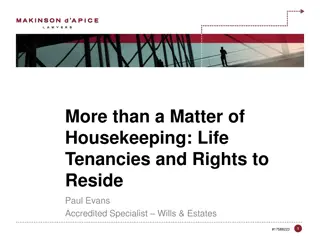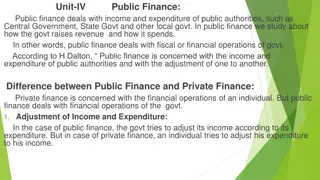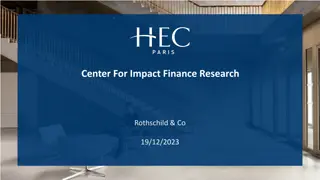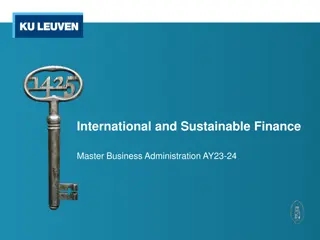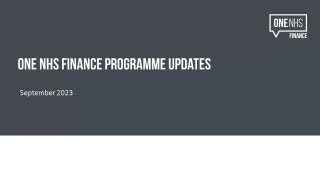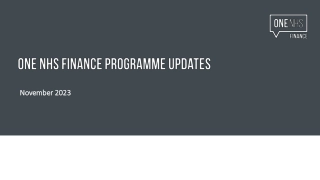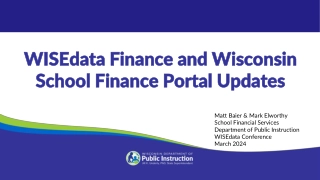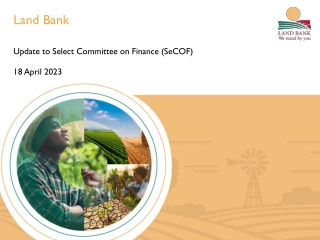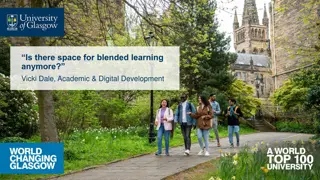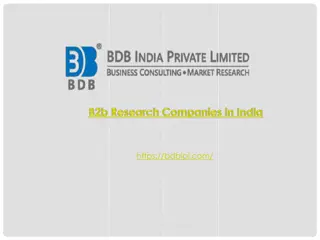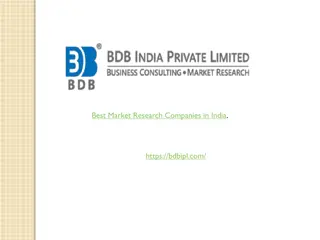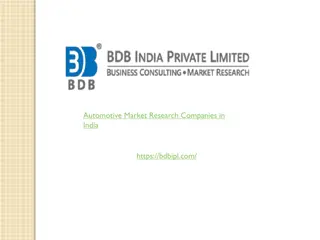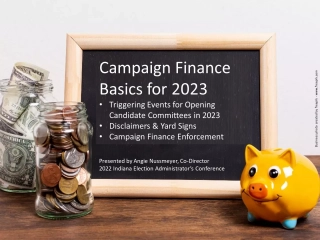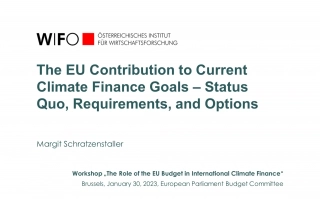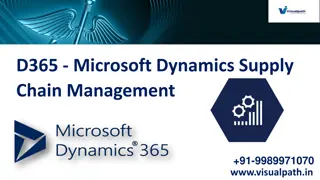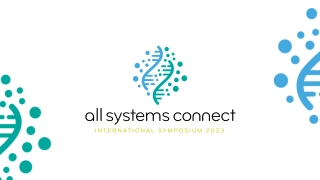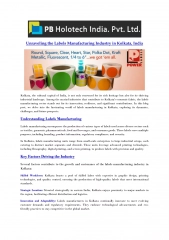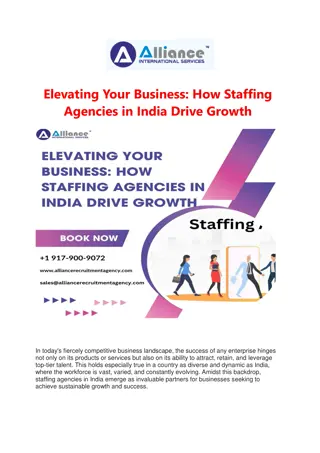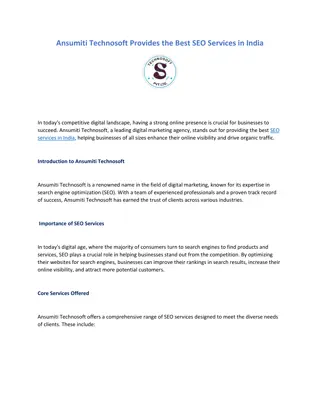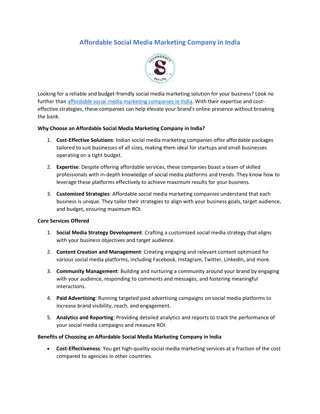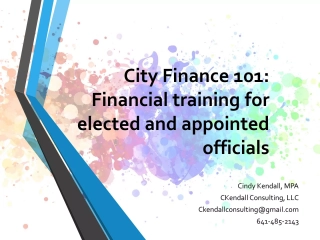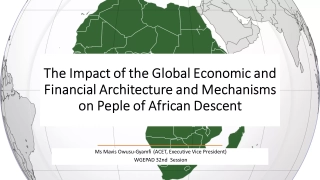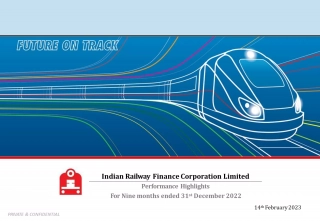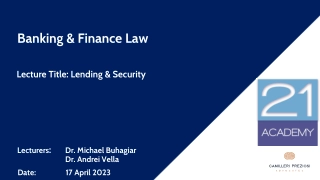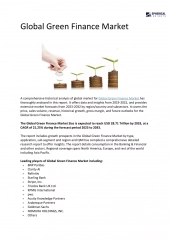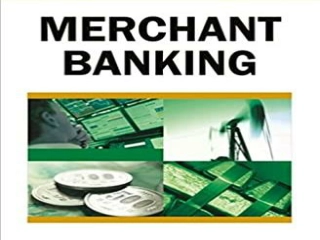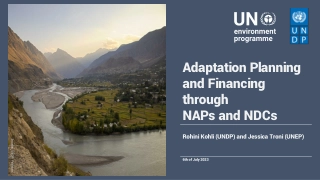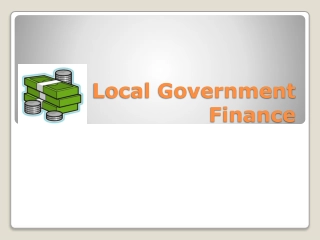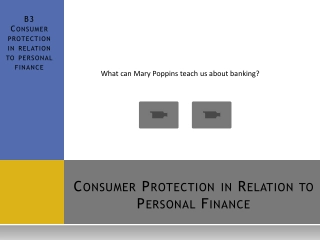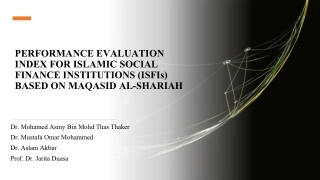Blended Finance in India
Blended finance in India combines development finance, philanthropic funds, and private capital to drive social, environmental, and economic progress while providing financial returns. The market has seen steady growth with USD 5.6 billion deployed across transactions. Annual investments show a positive trend, with bilateral agencies, DFIs, international foundations, NBFCs, and banks actively involved. Various instruments like concessional finance, guarantees, results-based financing, and technical assistance grants are shaping the landscape of blended finance in India.
Blended Finance in India
PowerPoint presentation about 'Blended Finance in India'. This presentation describes the topic on Blended finance in India combines development finance, philanthropic funds, and private capital to drive social, environmental, and economic progress while providing financial returns. The market has seen steady growth with USD 5.6 billion deployed across transactions. Annual investments show a positive trend, with bilateral agencies, DFIs, international foundations, NBFCs, and banks actively involved. Various instruments like concessional finance, guarantees, results-based financing, and technical assistance grants are shaping the landscape of blended finance in India.. Download this presentation absolutely free.
Presentation Transcript
Blended Finance in India A decade of Blended Finance in India and what lies ahead September 2023 Aparna Dua Director, Asha Impact Tushar Thakkar Associate Partner, Dalberg Advisors
What is blended finance? Focus on commercial returns Focus on impact Commercial investing Traditional philanthropy ESG / SRI investing Impact Investing Blended finance Uses development finance and philanthropic funds to attract private capital into deals Leverage Includes investments that drive social, environmental & economic progress Provides financial returns for private investors based on real & perceived risks Impact Returns Blended finance is a tool in the fund-raising team & funder s armory a significant proportion of very important interventions, that are in the nature of public goods and might be perceived to be highly risky by private capital still need to be and should be served by grants 1
Blended finance encompasses a broad range of instruments Concessional finance Guarantees / Risk insurance Results-based financing Technical assistance grants Development funder* only provides funding if impact targets are met, or provides an incentive for meeting impact targets Development funder* provide funds on below-market terms to reduce risk or improve return for private investors Development funder* by acting as a guarantor or by absorbing a portion of losses to mitigate risks Development funder* provides support to strengthen investees and improve project viability Description Concessional debt Concessional equity Partial / full loan Guarantees First loss capital Development / social Impact bonds Social success notes / interest subvention Feasibility studies Grants for setting up business processes / capacity building etc. Examples Simpler structures such as guarantees (1 in 2 transactions) and concessional & subordinate debt see substantial traction and higher transaction size Results-based financing transactions are typically smaller but focused on driving innovations and changing incentives significant and expanding focus on mainstreaming TA and design grants - critical role in driving growth and innovation 2
The Blended Finance market in India has been growing steadily USD 5.6 Billion has been deployed across ~180 transactions between 2010-22 Annual investments 2010-22 (USD Mn) 1115 CAGR +19% 880 760 602 420 283 145 139 2010 2012 2014 2016 2018 2019 2020 2022 Bilateral agencies / DFIs and international foundations are active development funders NBFCs and Banks are prominent private investors 3
Blended Finance Market by Sector Financial Services and Energy ~65% of market Total Market Size by Sector (Volume) Total Market Size by Sector (Value) As per industry survey, FS and Energy will continue to lead the market and Agriculture, Healthcare and Livelihoods will see increased traction. Education is leading the field in results-based financing 4
Learnings from early trends: Expansion of capital for important causes Overall leverage of catalytic capital is 5.06x Concessional Capital structures mostly in Financial Services and Energy mature business models allow for greatest efficiency and leverage Guarantees may have higher leverage in practice, however, most transactions have been structures with 30-50% guarantees RBF instruments instrumental in creating evidence of what works on-ground, creating pathways for much greater leverage and scale Catalytic capital has been able to co-opt significant commercial capital 5
Focus instrument: Results-based financing can be particularly impactful in the right conditions Results-based financing is most suitable when: Improves effectiveness of development programmes Outcomes are well-defined, measurable, attributable to the project and can be achieved in a reasonable timeline Data is available (including baseline data) for outcomes measurement Improves the efficiency of government and donor spending Capacity of various consortium members to operate under a rigorous results-oriented framework Problem is big enough to justify costs of designing, monitoring and managing a blended finance transaction Creates evidence of what works Interventions have been demonstrated, even if at only a pilot stage 6
Case Studies of Results-based financing (1/2) QEI Development Impact Bond India Skill Impact Bond The Skill Impact Bond is India s first outcomes- based transaction focused employment. It aims to strengthen India s technical and vocational education system and support 50,000 youth, 60% of whom will be women. The Quality Education India Development Impact Bond (QEI DIB) is the largest education DIB in the world and supports Indian education providers in improving learning outcomes for primary school children. on skilling and Investors: UBS Optimus foundation Outcome funders: MSDF Payment metric: Increased literacy and numeracy Size: USD 11 Mn Investors: NSDC, MSDF Outcome funders: CIFF, JSW, HSBC, Dubai Cares Payment metric: Emphasis on placement & retention Size: USD 14.4 Mn Current impact Current Impact 50% Higher learning outcomes 70% Women enrollment rate 200,000+ Impacted Participants 18,000+ Impacted Participants 2x Students achieving grade level proficiency 18 States included in the program 8% ROI for investor 7
Case Studies of Results-based financing (2/2) Health-tech Social Success Note Utkrisht Impact Bond The Social Success Note (SSN) will help innovative social enterprises scale and penetrate into regions with the highest need for healthcare services. Enterprises will receive loans from the investor. If they meet impact targets, the outcomes funder will reimburse a portion of the interest. The Utkrisht Impact Bond was the first impact bond globally to focus on healthcare. It aims to improve the quality of maternal care in private healthcare facilities in Rajasthan by helping 440 small healthcare organizations meet and adhere to new government quality standards. maternal and newborn Investors: UBS Optimus foundation Outcome funders: USAID, MSD for Mothers Payment metric: NABH and Manyata accreditation Size: USD 9 Mn Investors: Caspian Outcome funders: Samridh Size: USD 4 Mn Intended impact Current impact 8.3x Leverage on outcome funding 400+ healthcare providers supported 15+ High impact health solutions to be scaled 450,000+ Impacted Participants 8% IRR for investor 8
Learnings from early trends: Deepening of impact for key developmental areas Incentivization towards outcomes achievement has worked The Skill Impact Bond is tracking to outcomes (3m retention in job) achievement of 2-3x (conservatively) of what the ecosystem, including other grant models, were delivering Students under the Quality Education India impact bond learnt 2.5 times more than those in non- participating schools Flexible funding, with simple outcomes focus, drives iteration and context-specific innovation The Educate Girls Impact Bond had only achieved 50% of its learning targets at the second year. Using strong data systems and performance management, it revised its program design and achieved 160% of its learning target by the end of the third year. Implementing non-profits have stepped up to drive sustainable success Implementing partners that have been a part of outcomes-oriented structures have emphasized the transformation that they have gone through internally as well, supported by performance management This capacity building will make impact sustainable Aspirations are moving higher, focus on mainstreaming & systems change As the proof of concept is proven, funders are now targeting larger scale of impact looking to fund interventions (via RBFs) that transform systems and/or are amenable to large scale mainstreaming 9
Learnings from early trends: Early efforts have created a strong foundation for future expansion Deeper understanding of what it takes (including costs) to achieve outcomes The market now has experience in creating legal and financial structures Robust MEL and data generation, along with well-defined learning agendas, are helping distil an understanding of what it takes to achieve targeted outcomes As more structures are implemented, there is a greater understanding of the kinds of legal and financial structures, approaches and mechanisms that work E.g., successful application of RBF in education has helped identify the cost of achieving learning outcomes in various contexts. This has led to the creating of a core group of organizations, including non-profit actors, that now have a strong understanding of what it takes to set a transaction up for success, a key foundational element in facilitating future scale This will help improve ecosystem understanding, influence mainstream programs, and provide the infrastructure to scale RBFs, where needed 10
The direction of travel is clear, with multiple new disruptors on the horizon Regulatory frameworks such as SSE can help provide the necessary impetus by bringing more transparency in reporting, standardizing metrics and mobilising capital Social Stock Exchange For encouraging important sunrise sectors such as climate action, deep-tech, digital economy, pharma and agri-tech, the government will promote thematic funds for blended finance Increasing focus from Government Mainstream FIs such as banks, large NBFCs, impact funds in addition to DFIs increasing looking at blending as approach 80% of all capital mobilised till date in India Rising interest of capital allocators/ owners Sectors/ themes such as education, agriculture, healthcare, climate, WASH are ripe for scale and are moving away from bespoke structures to large scale facilities and funds Bespoke structures to facilities 11
Learnings from early trends: Despite the significant progress, some challenges to scaling blended finance in India remain Costs and complexities of structuring Regulatory complexity and restrictions Barriers to blended finance tools Narrow application of current Lack of quality and standardized data c instruments Limited stakeholder awareness and Limited ways to bring together private and philanthropic actors capacity The challenges are especially difficult for implementation partners / non-profits to address. While there are several on-ground initiatives that could benefit from catalyzing blended finance, organizations face several barriers to initiating such transactions 12
Learnings from early trends: Transaction implementation needs to evolve substantially Clearly outline key decision points and criteria for moving forward do not be afraid to walk away 1 During the set- up stage Identify the suitability of the financial instrument early on no need to use a blended instrument where a grant will suffice 2 Bring key stakeholders together early in the design process ensure design is collaborative and leverages everyone s expertise 3 Create strong performance contracts anchored to core outcomes align on core outcomes and the MEL process 1 During implementation Plan ahead for unknown knowns codify responses to events that could potentially disrupt the intervention 2 13
Unlocking blended finance in India will require a multi-pronged approach Engagement with Government Setting up an institutional framework - SSE Advocacy toward legal and regulatory issues Reduced cost of structuring Building templatized models Aiming for Scale Building Awareness and Trust Data-driven and evidence based discussions - IBFC Transparency and documentation 14
Thank you 15
Key Issues Faced by Stakeholders Challenges: Lack of Meaningful Pipeline Challenges: Knowledge and Track Record 4.1 4.0 Weighted Average 3.7 3.7 3.6 3.7 3.6 3.6 3.4 3.6 3.6 3.4 3.3 3.3 3.3 3.3 3.2 3.1 3.5 3.5 2.8 Lack of knowledge and experience among the market participants Lack of track record of additional impact Lack of track record of financial returns Minimum scale of transactions Sectors of interest Relevant structures # of investable transactions Challenges: Appetite and Capacity 4.6 4.4 4.1 4.1 3.9 3.9 Weighted Average 3.7 3.6 3.6 3.6 3.4 3.4 3.2 3.0 Commercial 2.9 Concessional Service Provider Lack of investors willing to participate in blended finance Inadequate appreciation at decision making level for impact Lack of clear and robust regulatory/legal environment Cost and time for structuring Lack of intermediaries to help structure and manage BF
Social/Development Impact Bonds Impact Bonds(1)are a contract between 3 parties (a) Investor (b) Service Provider (c) Outcome Funder The investor (aka Risk Investor) gives the Service Provider a working capital grant (Principal) to achieve pre-determined social outcomes. If the Service Provider achieves these outcomes the investor receives the principal amount back with an interest payment, else the investor loses the Principal (akin to grant) The outcome targets and the interest payment are determined upfront, at the time of contract signing, based on existing baseline data & negotiations The Outcome Funder only pays on the achievement of outcomes which are measured by a third party independent evaluator periodically (usually annually) (1) Social Impact Bonds are where government is the outcome funder; in case of a philanthropic donor, they are called Development Impact Bonds 13
Impact Linked Debt Social Success Notes Soft Loans with Guarantees A loan given to a for-profit social enterprise where interest subvention is offered by philanthropic capital if pre-determined impact objectives are met at the end of the intervention A loan given to a for-profit social enterprise which is back-stopped by philanthropic capital; outcome achievement is incentivised through performance- linked payments Beneficiaries Outcome Funder Principal Guarantee Goods & Services Soft Loan Social Enterprise Risk Investor Repays Loan 14


